NICOTINE PATCH - TRANSDERMAL
PHONETIC PRONUNCIATION: (NICK-oh-teen)
COMMON BRAND NAME(S): Habitrol, Nicoderm CQ, Nicotrol
GENERIC NAME(S): nicotine
Uses
USES: This medication can help you quit smoking by replacing the nicotine in cigarettes. The nicotine in tobacco is an important part of cigarette addiction. When you stop smoking, your nicotine levels drop quickly. This drop can cause withdrawal symptoms such as craving tobacco, nervousness, irritability, headache, weight gain, and difficulty concentrating. Stopping smoking is hard and your chance of success is best when you are ready and have made a commitment to quit. Nicotine replacement products are part of a total stop-smoking program that includes behavior change, counseling, and support. Smoking causes lung disease, cancer, and heart disease. Stopping smoking is one of the most important things you can do to improve your health and live longer.
How to use NICOTINE PATCH - TRANSDERMAL
HOW TO USE: If you are using the over-the-counter product, read all directions on the product package before using this medication. If your doctor has prescribed this medication, read the Patient Information Leaflet if provided by your pharmacist before you start using this product and each time you get a refill. Make sure you understand how to apply a new patch and dispose of the used product. If you have any questions, consult your doctor or pharmacist. Start this medication on your quit (smoking) day. The patch should be applied to a clean, dry, non-hairy area on the trunk or upper arm. Check the manufacturer's instruction sheet for recommended areas to place the patch. If necessary, clip hair from the site before applying the patch. Do not shave the area. Remove the patch from the package, peel off the protective strip, and immediately apply the patch to the skin. Press firmly for 10 to 20 seconds to make sure the patch stays in place. Be sure the edges are held firmly to the skin. Wash your hands with plain water after applying the patch. Do not use soap. The best dose for you is the dose that decreases the urge to smoke without side effects from too much nicotine. If your doctor has prescribed this medication, follow your doctor's orders carefully. Your dose will need to be adjusted to your needs, including smoking history and medical condition. Different brands of nicotine patches have different amounts of nicotine and different instructions for how long to leave the patch on the skin (e.g., for 24 hours or only while awake). Consult your doctor or pharmacist about which brand of patch to use. If you wake up craving cigarettes, the 24-hour patch may be best. If the patch causes vivid dreams or interferes with sleep, you may need to wear the patch only while awake (16 hours each day). Do not apply the patch to red/cut/irritated skin or over other skin products (e.g., makeup, lotions, powders). Do not use the patch if the individual pouch is open or damaged or if the patch is cut, torn, or damaged. Apply the patch to a different area on your body each time to avoid irritation. Wait at least a week before using the same application site. Apply a new patch if your patch falls off. Do not wear a patch for more than 24 hours. Do not wear more than 1 patch at a time. After removing each patch, fold it in half so it sticks to itself, and discard in the trash away from children and pets. Use a new patch each day, applying it at the same time each day to help you remember, usually when you wake up. After several weeks, you will gradually lower your dose (strength of patch) until you no longer need nicotine replacement. It is important to complete the treatment with this medication (8 to 10 weeks). If after the treatment period, you still feel the need to use this medication to prevent you from smoking, talk to your doctor. This medication may cause withdrawal reactions, especially if it has been used regularly for a long time or in high doses. In such cases, withdrawal symptoms (such as tobacco cravings, nervousness, irritability, headache) may occur if you suddenly stop using this medication. To prevent withdrawal reactions, your doctor may reduce your dose gradually. Consult your doctor or pharmacist for more details, and report any withdrawal reactions right away. Tell your doctor if you have not been able to quit smoking after using this product for 4 weeks. Some smokers are unsuccessful the first time they try to quit. You may need to stop using this product and try again later. Many people who cannot quit the first time are successful the next time.
Side Effects
Precautions
Interactions
Overdose
Images
Reviews
Disclaimer
IMPORTANT: HOW TO USE THIS INFORMATION: This is a summary and does NOT have all possible information about this product. This information does not assure that this product is safe, effective, or appropriate for you. This information is not individual medical advice and does not substitute for the advice of your health care professional. Always ask your health care professional for complete information about this product and your specific health needs.
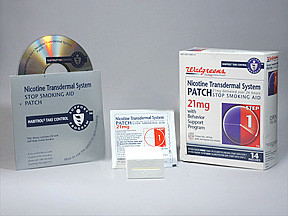
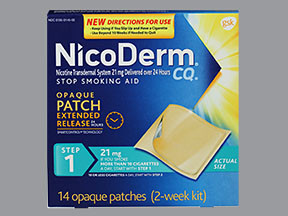
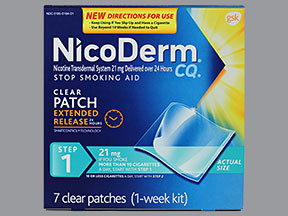


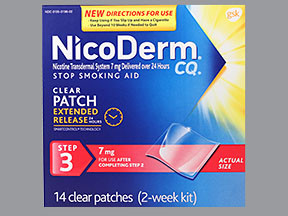

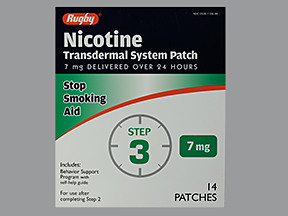
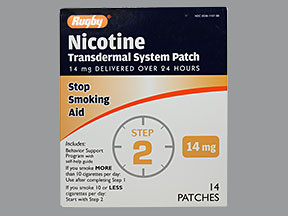
No Reviews Yet